Ancient Engraved Gems formely from the Giorgio Sangiorgi Collection sold at Christie's London
Lot 91. A Greco-Persian violet chalcedony scaraboid with a lion-griffin, Classical court style, circa 5th century B.C.; 15⁄16 in. (2.4 cm.) wide. Lot sold: GBP 100,800 (Estimate: GBP 20,000 – GBP 30,000). © Christie's 2022
Provenance: Giorgio Sangiorgi (1886-1965), Rome, acquired and brought to Switzerland, late 1930s; thence by continuous descent to the current owner.
Literature: A.U. Pope, A Survey of Persian Art, Vol. I, London, 1938, p. 392, fig. 90b.
J. Boardman, Greek Gems and Finger Rings, London, 1970, p. 431, no. 31.
J. Boardman and C. Wagner, Masterpieces in Miniature: Engraved Gems from Prehistory to the Present, London, 2018, p. 73, no. 64.
Note: This finely-carved scaraboid depicts a popular subject borrowed from Mesopotamian art: the Persian lion-griffin, shown with a horned lion's head and forepart with wings. The tail is of an ostrich and the hind legs are of a bird of prey. The monster often appears in Persian Imperial art, notably as an adversary for the Persian royal hero on reliefs at Persepolis, see nos 42-43 in J. Curtis and N. Tallis (eds), Forgotten Empire, The World of Ancient Persia. The small knobbed horn is often added to create monsters in Persian and related arts of this period. For seals with similar lion-griffin monsters cf. J. Boardman, Greek Gems and Finger Rings, London, 1970, p. 351, pls 838-842.
Lot 115. A Roman carnelian ringstone with a profile male head, Republican period, circa 1st century B.C.; 9/16 in. (1.5 cm.) long. Lot sold: GBP 50,400 (Estimate: GBP 5,000 – GBP 7,000). © Christie's 2022
Provenance: with Francesco Martinetti (1833-1895), Rome.
Giorgio Sangiorgi (1886-1965), Rome, acquired and brought to Switzerland, late 1930s; thence by continuous descent to the current owner.
Literature: M.-L. Vollenweider, Die Porträtgemmen der römischen Republik, 1974, vol. I, p. 190, vol. II, p. 81, pl. 139, nos. 1, 6.and C. Wagner, Masterpieces in Miniature: Engraved Gems from Prehistory to the Present, London, 2018, p. 73, no. 64.
Note: The finely carved Republican profile head with deeply carved layers of closely cropped wavy hair, a prominent, well-defined ear, long aquiline nose, a shallow, stepped forehead and a long neck.
Lot 113. A Roman carnelian ringstone with a profile portrait of the philosopher Epicurus, circa 1st century B.C.; 9/16 in. (1.5 cm.) long. Lot sold: GBP 30,240 (Estimate: GBP 15,000 – GBP 20,000). © Christie's 2022
Provenance: Giorgio Sangiorgi (1886-1965), Rome, acquired and brought to Switzerland, late 1930s; thence by continuous descent to the current owner.
Literature: J. Boardman and C. Wagner, Masterpieces in Miniature: Engraved Gems from Prehistory to the Present, London, 2018, p.161, no. 147.
Note: This ringstone is engraved with the imposing bust of the philosopher Epicurus in profile, with his characteristic large, curved nose, long beard, deep-set eyes and wearing a himation over his shoulders.
Born in 341 B.C., probably in Samos, Epicurus studied and taught philosophy across the Greek world before establishing his school in Athens. For 36 years, he lived, studied and wrote there, isolated from the outside world except for his students and his scholarship. Both his work and his appearance were recognised throughout Roman times. As Cicero notes, his friend Titus Pomponius Atticus "could not forget Epicurus even if he wanted; the members of our body not only have pictures of him, but even have his likeness on their drinking cups and rings," (De finibus bonorum et malorum, V,i,3).
Portraits of the philosopher occur on several engraved gems dating to the Roman period, thus confirming Cicero's statement that his followers wore likenesses of their master on their rings as a show of reverence and love towards him. For a similar portrait, see a red jasper ringstone at the British Museum, Inv. no. 1867,0507.458.
Lot 88. A Greek blue chalcedony scaraboid with a heron catching a frog, Classical period, circa late 5th century B.C.; 13/16 in. (2 cm.) long. Lot sold: GBP 21,420 (Estimate: GBP 10,000 – GBP 15,000). © Christie's 2022
Provenance: said to be from Taranto.
?Giorgio Sangiorgi (1886-1965), Rome, acquired and brought to Switzerland, late 1930s; thence by continuous descent to the current owner.
Literature: G.M.A. Richter, "Unpublished Gems in Various Collections", in American Journal of Archaeology, Vol. 61, New York, 1957, p. 264, pl. 81, fig. 5.
J. Boardman, Greek Gems and Finger Rings, London, 1970, 205, fig. 209.
H.C.L. Wiegandt, Die griechischen Siegel der klassischer Zeit: Ikonographischer Vergleich, Frankfurt am Main, 2009, p. 130, no. Eha75, pl. XCI.
J. Boardman and C. Wagner, Masterpieces in Miniature: Engraved Gems from Prehistory to the Present, London, 2018, p. 60, no. 52.
Note: This vibrant scaraboid depicts a heron lowering its head to catch a frog and testifies to the ability of fifth-century gem engravers to depict animals. There is no ground line or surrounding border, which Richter notes (op. cit. p. 264) gives spaciousness, suggesting the out-of-doors, in spite of its small scale.
Lot 89. A Greek garnet ringstone with profile head of a Ptolemaic king, Ptolemaic period, circa 2nd century B.C. ; 5/8 in. (1.6 cm.) long. Lot sold: GBP 13,860 (Estimate: GBP 15,000 – GBP 20,000). © Christie's 2022
Provenance: ?Giorgio Sangiorgi (1886-1965), Rome, acquired and brought to Switzerland, late 1930s; thence by continuous descent to the current owner.
Literature: J. Boardman and C. Wagner, Masterpieces in Miniature: Engraved Gems from Prehistory to the Present, London, 2018, p. 123, no. 110.
Note: Engraved on this garnet ringstone is the draped portrait bust of a corpulent Ptolemaic king, depicted wearing a Macedonaian kausia fronted by a diminutive Egyptian crown, a solar disc surmounted by upright plumes. As Boardman and Wagner note (op. cit., p. 123), this portrait is not closely matched by any of the Ptolemaic kings known either from other gems or coins, but it seems possible that Ptolemy VIII Euergetes (146-116 B.C.) is the subject, given that his nickname was “Physcon,” or “Pot Belly”. Our portrait features bloated cheeks and a hooked nose, similar to that seen on a clay seal impressions depicting Ptolemy VIII (see nos. 60 and 61 in Walker and Higgs, Cleopatra of Egypt, from History to Myth); see also a silver didrachm depicting him wearing a rayed diadem, no. 91 in Walker and Higgs, op. cit.
Three glass cameos are known that likely depict the same individual, each wearing the kausia but absent the Egyptian crown: one in the British Museum (Walters, Catalogue of Engraved Gems & Cameos, Greek, Etruscan & Roman, no. 3824), one in Naples (Pannuti, Catalogo della Collezione Glittica, vol. I, 180), and one in Munich (Brandt, et al., Antike Gemmen in Deutschen Sammlungen, Band I, Staatliche Munchen, Teil 3, no. 3525).
Lot 89. A European onyx cameo with a bearded man holding a scroll, circa 15th-16th century or later ; 1 5⁄16 in. (2.3 cm.) long. Lot sold: GBP 12,600 (Estimate: GBP 6,000 – GBP 8,000). © Christie's 2022
Provenance: Giorgio Sangiorgi (1886-1965), Rome, acquired and brought to Switzerland, late 1930s; thence by continuous descent to the current owner.
Literature: J. Boardman and C. Wagner, Masterpieces in Miniature: Engraved Gems from Prehistory to the Present, London, 2018, p. 247, no. 231.
Note: Cut in relief with the bust of a bearded man with balding pate, holding a scroll in his bent arm. He wears armour under a cloak, the end of which is draped over his shoulder.
Lot 99. An Etruscan carnelian scarab with two athletes, circa late 5th century B.C.; 11/16 in. (1.7 cm.) long. Lot sold: GBP 11,340 (Estimate: GBP 15,000 – GBP 20,000). © Christie's 2022
Provenance: Robinson collection.
Wyndham Francis Cook (1860-1905), London; thence by descent to his son, Humphrey W. Cook (1893-1978), London.
An Important Collection of Greek, Roman and Etruscan Antiquities and Antique and Renaissance Gems, the Property of Humphrey W. Cook, Esq.; Christie's, London, 14-16 July, 1925, lot 46.
Giorgio Sangiorgi (1886-1965), Rome, acquired and brought to Switzerland, late 1930s; thence by continuous descent to the current owner.
Literature: C. H. Smith and C. A. Hutton, Catalogue of the Antiquities (Greek, Roman and Etruscan) in the Collection of the Late Wyndham Francis Cook, Esq., London, 1908, p. 15, no. 47, pl. 2.
J. Boardman and C. Wagner, Masterpieces in Miniature: Engraved Gems from Prehistory to the Present, London, 2018, p. 93, no. 81.
Note: The high sided beetle with cross-hatched plinth. The underside shows an unusual athlete scene with two figures, rather than one, which is the more common type seen on Etruscan scarabs. A naked bearded man holding a strigil and in his raised hand a short arrow or club is depicted here with his head turned in conversation with a naked youth, leaning on a long staff, wearing a dotted cloak or animal skin, and a conical, long-tailed cap hanging down his back, the exergue filled in with cross-hatching. There is a similar composition with Herakles and Hermes conversing on an Etruscan scarab of the same date, in the British Museum, inv. no. 1867,0507.350.
Lot 93. A Greco-Persian blue chalcedony scaraboid of a hero with lion-griffin archaic court style, circa late 6th- early 5th century B.C.; 11/16 in. (1.7 cm.) long. Lot sold: GBP 10,710 (Estimate: GBP 10,000 – GBP 15,000). © Christie's 2022
Provenance: Paul Julius Arndt (1865-1937), Munich (collection number A1419), said to be from Tarentum.
Giorgio Sangiorgi (1886-1965), Rome, acquired and brought to Switzerland, late 1930s; thence by continuous descent to the current owner.
Literature: F. von Duhn, "Alcune nuove gemme graeco-persiane," in Symbolae litterariae in honorem Julii de Petra, Naples, 1911, p. 40, fig. 3.
J. Boardman, Greek Gems and Finger Rings, London, 1970, p. 309, fig. 280.
J. Boardman and C. Wagner, Masterpieces in Miniature: Engraved Gems from Prehistory to the Present, London, 2018, p. 68, no. 59.
Note: A popular subject for Persian cylinder seals, a Persian royal hero, dressed in a crown and long pleated tunic, is shown here grabbing the horns of two rearing winged lion griffins, the monsters with avian hind legs. For a similar seal in glass in the Metropolitan Museum of Art see inv. no: 64.98.1.
Lot 125. A Norman bloodstone ringstone with a falconer on horseback, circa second half of 12th century A.D.; 1 1/8 in. (2.9 cm.) long. Lot sold: GBP 10,710 (Estimate: GBP 2,000 – GBP 3,000). © Christie's 2022
Provenance: Giorgio Sangiorgi (1886-1965), Rome, acquired and brought to Switzerland, late 1930s; thence by continuous descent to the current owner.
Literature: H. Wenztel, ‘Mittelalterliche Gemmen in den Sammlungen Italiens’, in Mitteilungen des Kunsthistorischen Institutes in Florenz 1956, p. 241, figs. 3 and 4.
Note: The horseman is depicted riding sitting upright on his stead to the left, with a bird of prey resting on his outstretched arm. The horse prancing with foreleg lifted, wearing tasseled blanket and trappings. With star and branches in the field.
Lot 101. An Etruscan carnelian scarab with hercle and serpent circa early 4th century B.C.; 5/8 in. (1.6 cm.) long. Lot sold: GBP 10,080 (Estimate: GBP 6,000 – GBP 8,000). © Christie's 2022
Provenance: Giorgio Sangiorgi (1886-1965), Rome, acquired and brought to Switzerland, late 1930s; thence by continuous descent to the current owner.
Note: The finely detailed beetle is incised with bands of diagonal cross-hatching on the edges of the plinth. On the underside, the young, well-muscled, nude hero Hercle raises his club in his left hand and kneels on the coils of a crested serpent, gripping its neck in his right hand. The scene is enclosed within a hatched border.
Herakles' most famous encounter with a serpent comes when he kills the multi-headed Lernaean Hydra. Although some scholars have interpreted his fighting a single-headed snake as a depiction of this second Labour, Boardman and Wagner in Masterpieces in Miniature: Engraved Gems from Prehistory to the Present, London, 2018, pp. 98 and 109, note that this is not always the case. The hero encounters snakes in other contexts, including one guarding the tree of the Hesperides, another during his travels in Lydia, and the shape-shifter Periklymenos. The motif appears on Etruscan and Italic gems of the 4th and 3rd century B.C. For a similar carnelian scarab dating to the late 5th-early 4th Century B.C., in the British Museum (inv. BM 722) cf. "Herakles/Hercle,", LIMC, Vol. V, p. 233, no. 343.
Lot 86. A Greek carnelian scarab with an athlete holding a discus, Archaic period, circa early 5th century B.C.; 3/4 in. (1.9 cm.) long. Lot sold: GBP 8,190 (Estimate: GBP 4,000 – GBP 6,000). © Christie's 2022
Provenance: Giorgio Sangiorgi (1886-1965), Rome, acquired and brought to Switzerland, late 1930s; thence by continuous descent to the current owner.
Note: The high scarab with carinated back is carved on the underside with the figure of a well-muscled youth throwing a discus, with both arms raised, one leg crossed behind the other, head angled down. The scene surrounded by a hatched border. For the discus thrower as a subject on early Greek gems cf. J. Boardman, Archaic Greek Gems, London, 1968, p. 82, no. 215, pl. XIV; and for the popularity of the discobolos on classical gems in general, in various poses, both active and static cf. G. Lippold, Gemmen und kameen des Altertums und der Neuzeit, Stuttgart, 1922, pl. LV.
Lot 90. A Greek garnet ringstone of Demetrios I Soter, Hellenistic period, circa 2nd century B.C.; 5/8 in. (1.6 cm.) long. Lot sold: GBP 8,190 (Estimate: GBP 12,000 – GBP 18,000). © Christie's 2022
Provenance: Giorgio Sangiorgi (1886-1965), Rome, acquired and brought to Switzerland, late 1930s; thence by continuous descent to the current owner.
Literature: J. Boardman and C. Wagner, Masterpieces in Miniature: Engraved Gems from Prehistory to the Present, London, 2018, p. 126, no. 113.
Note: Demetrios I Soter ("Saviour") ruled the Seleucid Empire from 162-150 B.C. After the treaty of Apamea with Rome in 188 B.C. the Seleucid Empire was weakened by massive reparations, losing huge swathes of land to neighbouring rulers and agreeing that members of the royal household would be held hostage in Rome. Demetrios was one such hostage - growing up in Rome from a very young age. It was not until he was 22, and with the help of the famous Greek historian Polybius, that he managed to escape his captors and make his way back to Antioch to take the throne. He mercilessly put to death Antiochus V, who was only a child at the time and his regent Lysias. His reign was by no means easy, with constant battles to put down various uprisings that were encouraged and supported by Rome, always looking for a way to keep the Seleucid kingdom divided and therefore weak. In the end Demetrios was killed by Alexander I, who had won the support of the Roman senate, and claimed to be the rightful heir to the throne with the support of Attalus II of Pergamum.
For Seleucid coin portraits cf R.R.R. Smith, Hellenistic Royal Portraits, Oxford, 1998, pl. 76. The coin of Demetrios shows the similar aquiline nose, full lips, straight chin, slightly stepped back forehead and the lengthy hair at the nape of the neck. The tip of a quiver and bow can be seen behind him.
Lot 111. A Roman garnet ringstone with a herm head of Hypnos, circa 1st century B.C.; 9/16 in. (1.5 cm.) long. Lot sold: GBP 8,190 (Estimate: GBP 8,000 – GBP 12,000). © Christie's 2022
Provenance: said to be from Taranto.
?Giorgio Sangiorgi (1886-1965), Rome, acquired and brought to Switzerland, late 1930s; thence by continuous descent to the current owner.
Literature: J. Boardman and C. Wagner, Masterpieces in Miniature: Engraved Gems from Prehistory to the Present, London, 2018, p. 152, no. 139.
Note: The herm head of Hypnos, the personification of sleep, is here represented facing to the right, with long beard and ringlets falling onto his shoulders, wearing a herring-bone hatched diadem with a wreath of leaves behind, dotted butterfly wings emerging from the diadem behind his ear with ribbons trailing out behind. This is a particularly detailed example of the type. For others cf. "Hypnos/Somnus" in LIMC, Vol. V, p. 598, nos 63-64, with the above example being very similar to one in Munich (A 1742) and J. Boardman, Engraved Gems, The Ionides Collection, London, 1968, p. 104, no. 87.
Lot 92. A Greco-Persian pale blue chalcedony scaraboid of a seated griffin, circa 4th century B.C.; 1 3/16 in. (3 cm.) long. Lot sold: GBP 7,560 (Estimate: GBP 10,000 – GBP 15,000). © Christie's 2022
Provenance: Paul Julius Arndt (1865-1937), Munich.
Giorgio Sangiorgi (1886-1965), Rome, acquired and brought to Switzerland, late 1930s; thence by continuous descent to the current owner.
Literature: J. Boardman and C. Wagner, Masterpieces in Miniature: Engraved Gems from Prehistory to the Present, London, 2018, p. 75, no. 66.
Note: Engraved in the Greek Style with a seated winged griffin facing to the right on a groundline, one forepaw raised, the monster with a spiked crest and upright ears, the beak open with tongue protruding, the undulating tail extending behind. For similar griffins cf. J. Boardman, Greek Gems and Finger Rings, London, 1970, pls. 957 and 958.
Lot 108. A Roman sardonyx ringstone with Dionysus riding a panther, circa 1st century A.D.; 1. in. (2.6 cm.) long. Lot sold: GBP 7,560 (Estimate: GBP 10,000 – GBP 15,000). © Christie's 2022
Provenance: Giorgio Sangiorgi (1886-1965), Rome, acquired and brought to Switzerland, late 1930s; thence by continuous descent to the current owner.
Literature: J. Boardman and C. Wagner, Masterpieces in Miniature: Engraved Gems from Prehistory to the Present, London, 2018, p.183, no. 169.
Note: The domed oval sardonyx is composed of two layers, red over cream. Engraved with the charming scene of the infant Dionysos riding a pantheress, sitting astride her back holding a long ribboned thrysos and offering her a cup. She sits with one forepaw raised, long tail curling up, her head turned back towards the god, with her tongue out to drink from the proffered vessel. The image of the infant god riding a panther was obviously popular in many media: see "Dionysos/Bacchus", in LIMC, Vol III, p. 552, no. 148, for a fresco in Naples Museum, inv. no. 9122 and p. 554, no 174 for a mosaic with the infant being supported by a maenad. For a very similar gem in Berlin (inv. no. 1680), cf. A. Furtwängler, Die Antiken Gemmen, Berlin and Leipzig, 1900, pl. XXVIII, no. 23.
Christie's. Antiquities: Including Ancient Engraved Gems Formerly in the G. Sangiorgi Collection Part IV, 7 Dec 2022

/https%3A%2F%2Fprofilepics.canalblog.com%2Fprofilepics%2F1%2F0%2F100183.jpg)
/https%3A%2F%2Fstorage.canalblog.com%2F03%2F02%2F119589%2F96711876_o.jpg)
/https%3A%2F%2Fstorage.canalblog.com%2F11%2F31%2F119589%2F94773502_o.jpg)
/https%3A%2F%2Fstorage.canalblog.com%2F20%2F83%2F119589%2F94772815_o.jpg)
/https%3A%2F%2Fstorage.canalblog.com%2F26%2F72%2F119589%2F75604929_o.jpg)
/https%3A%2F%2Fstorage.canalblog.com%2F59%2F60%2F119589%2F26458628_o.jpg)

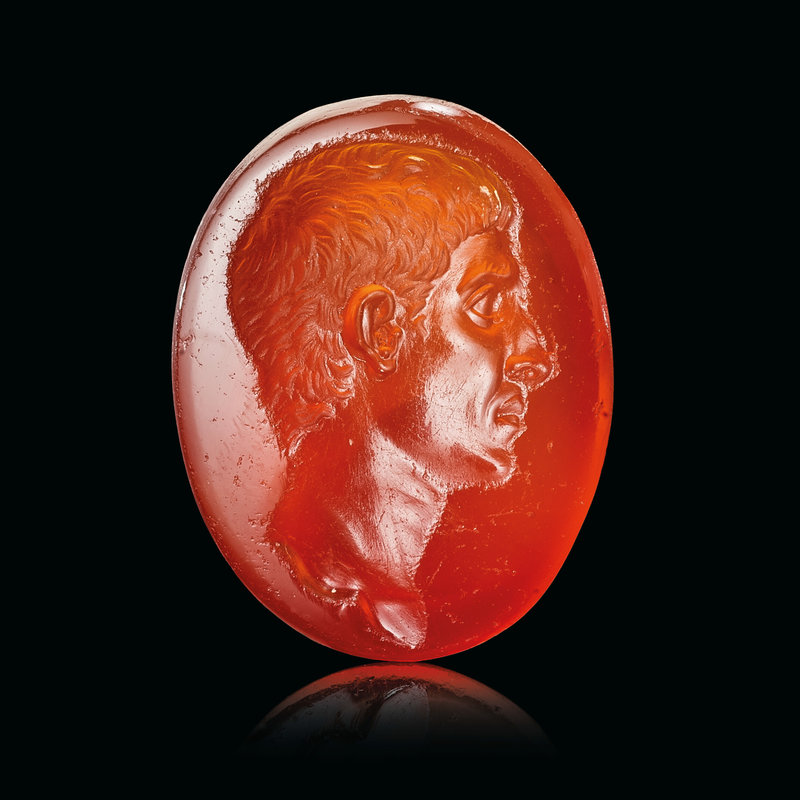
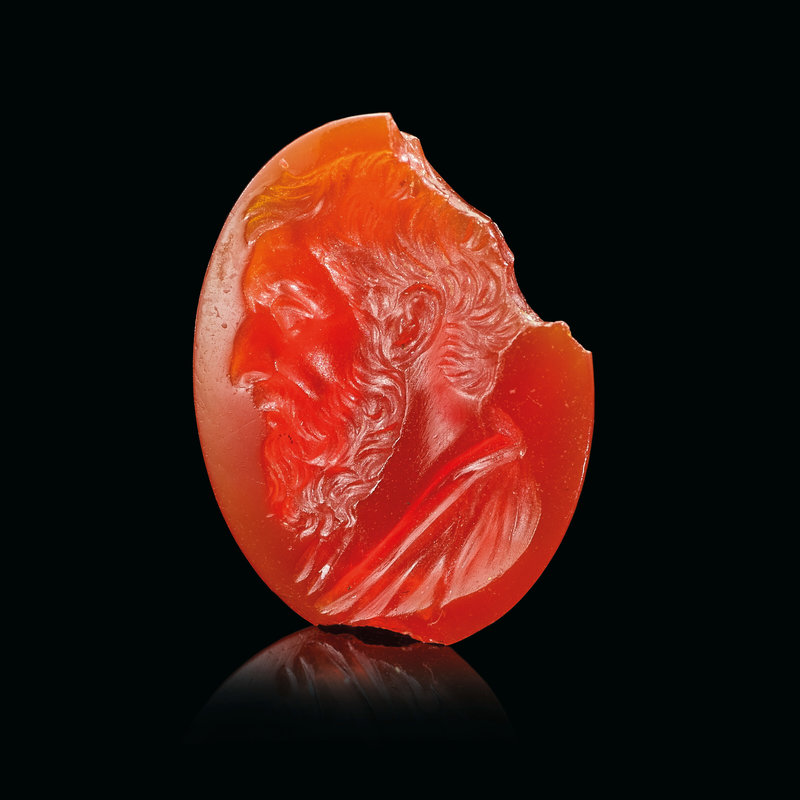

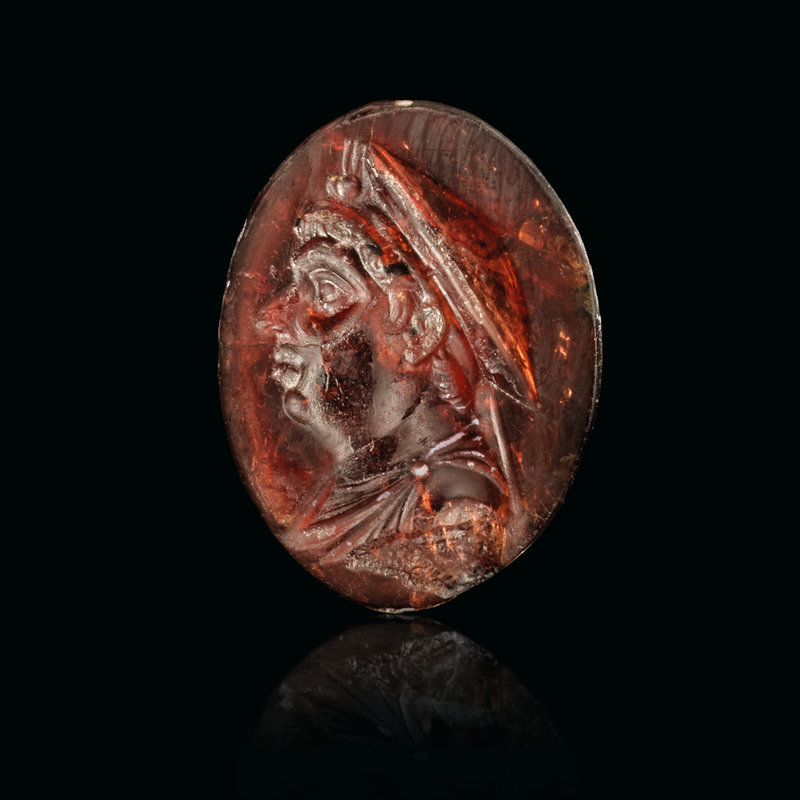
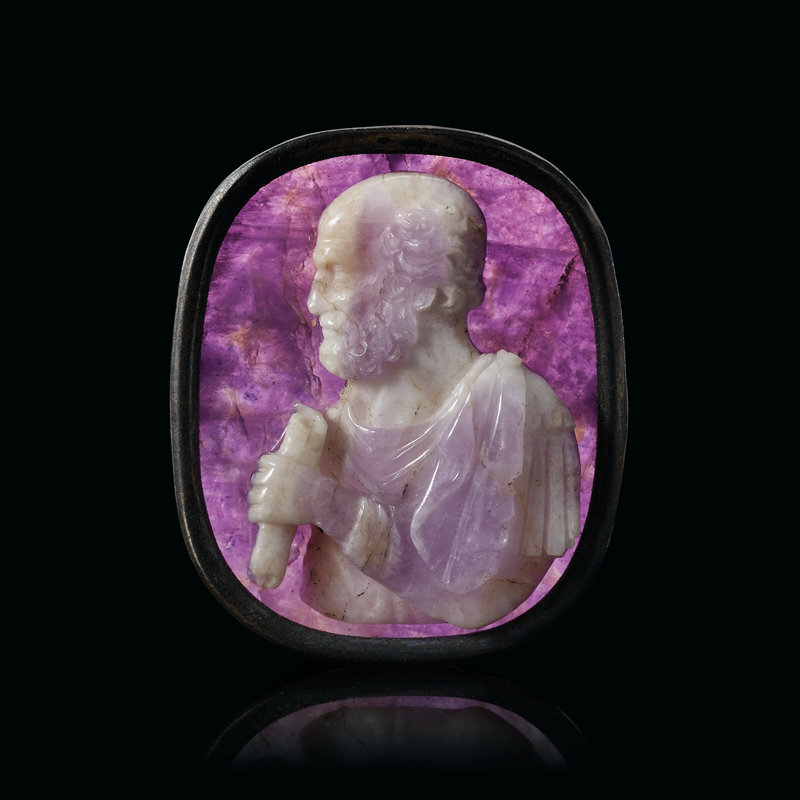
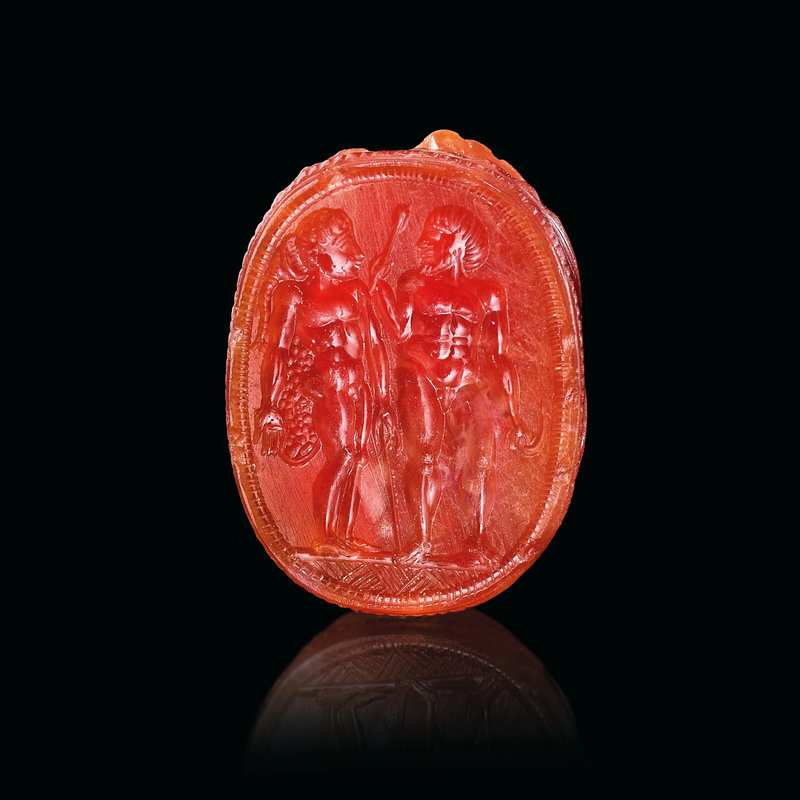
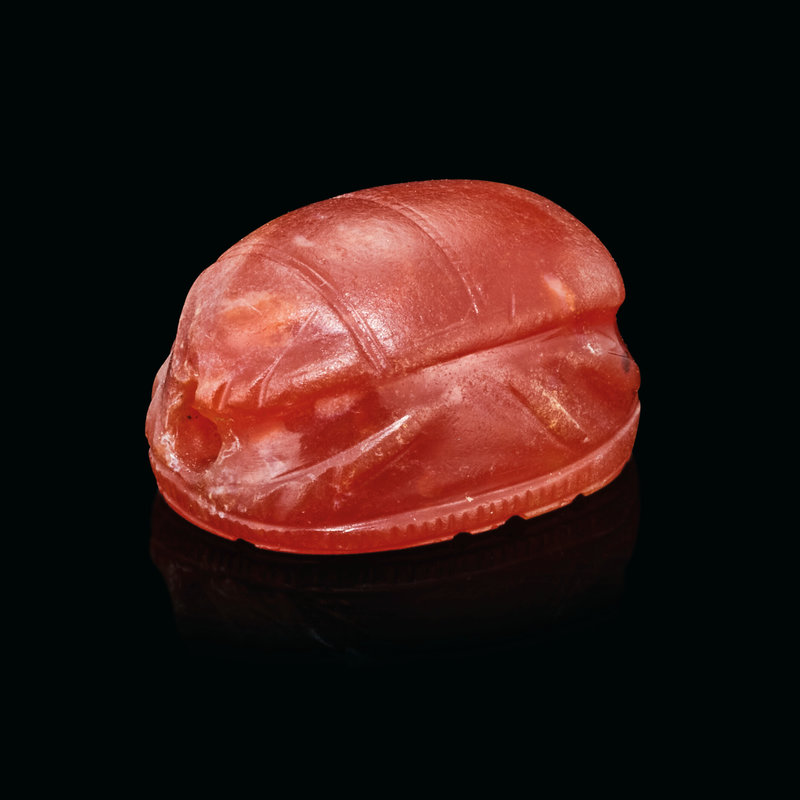
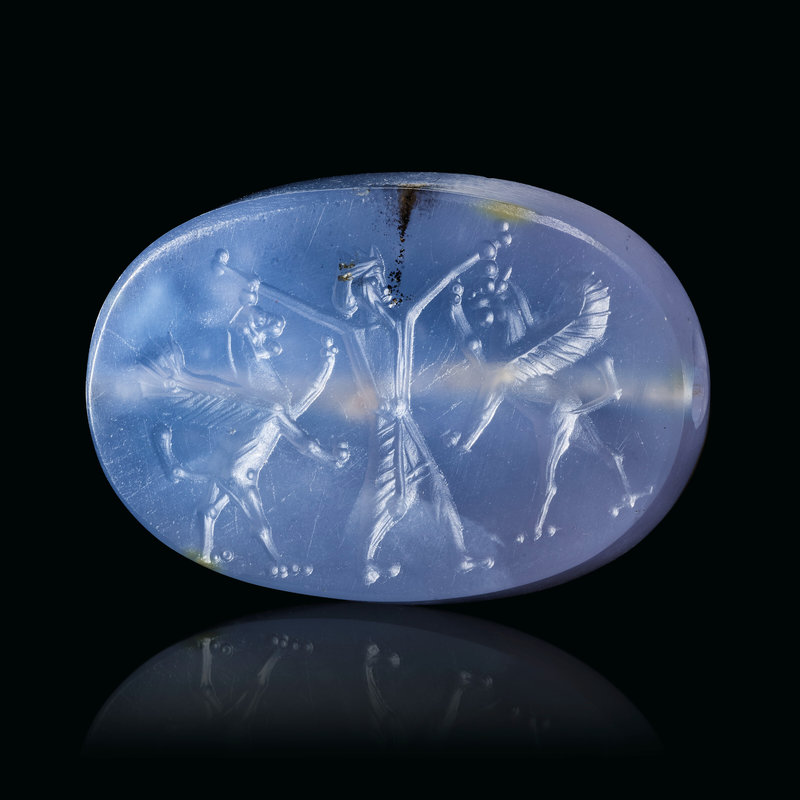
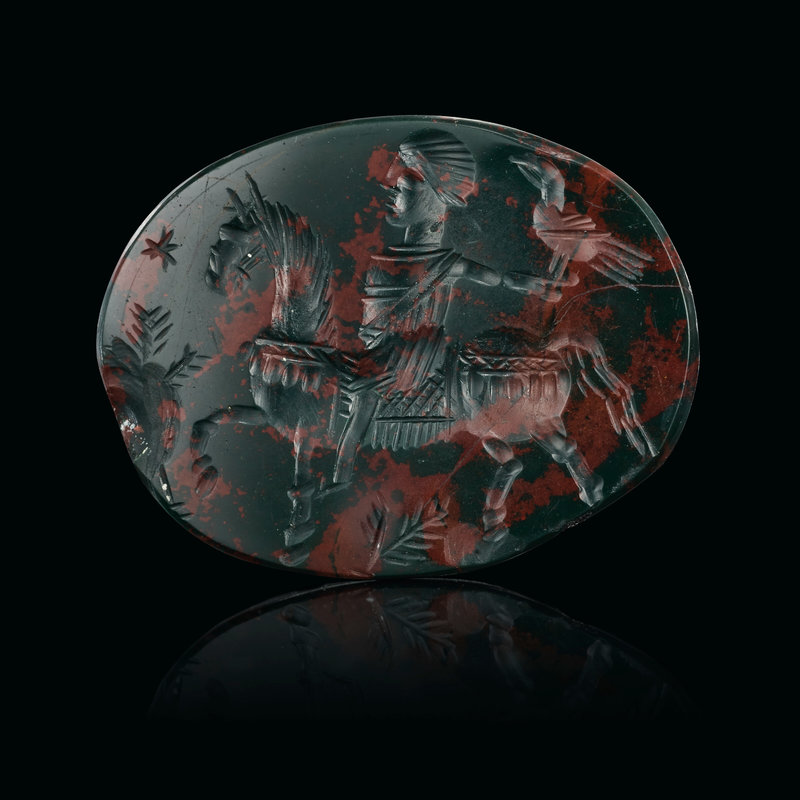
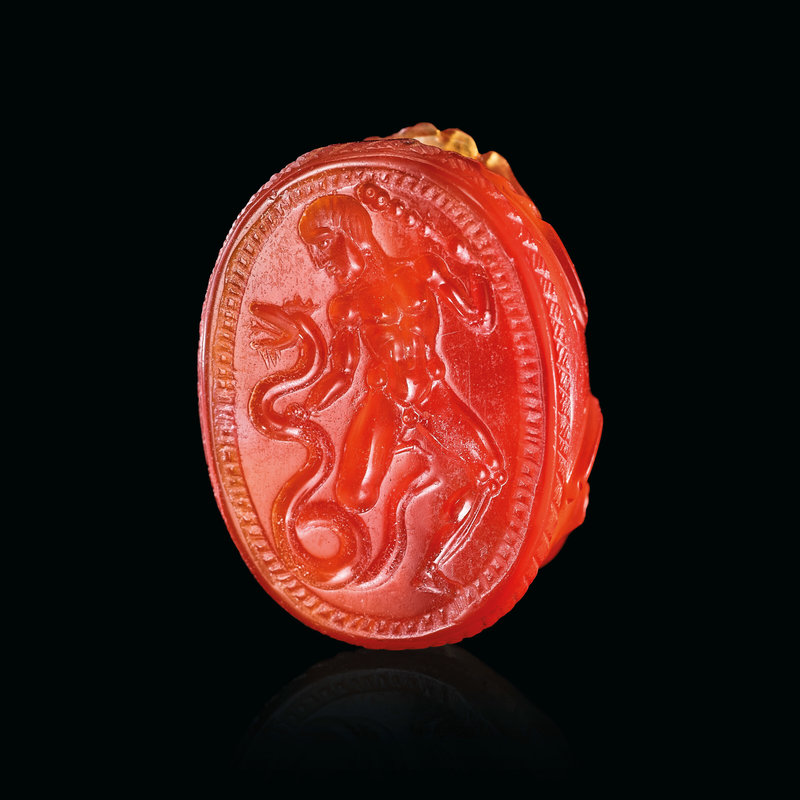
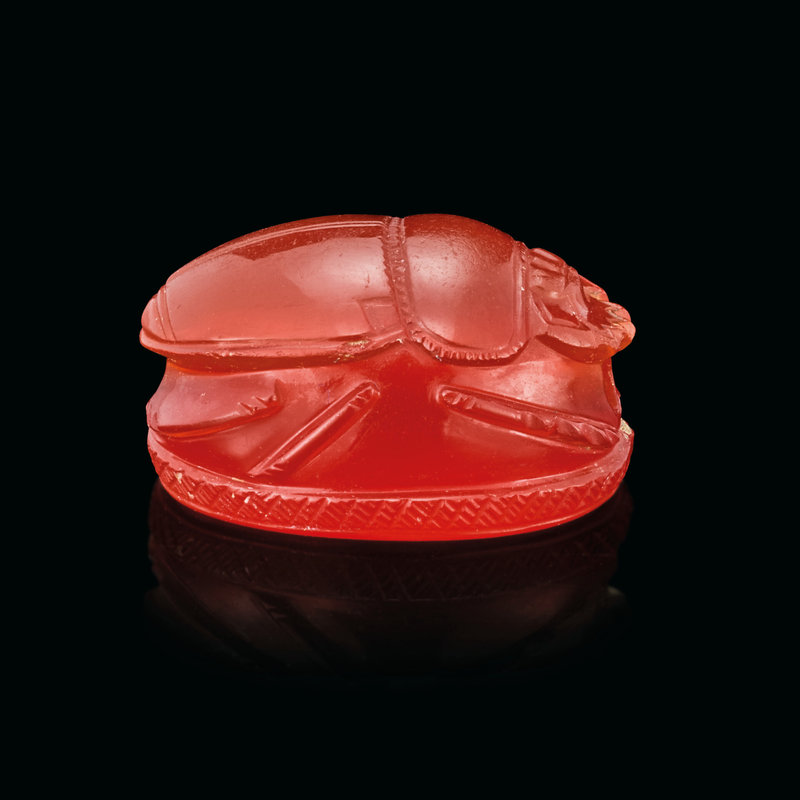
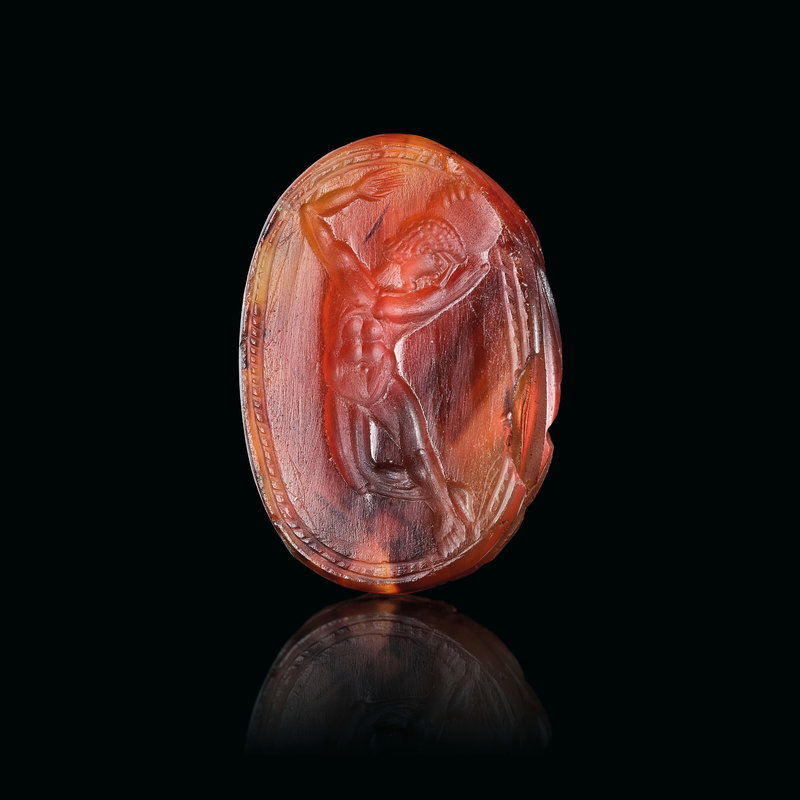

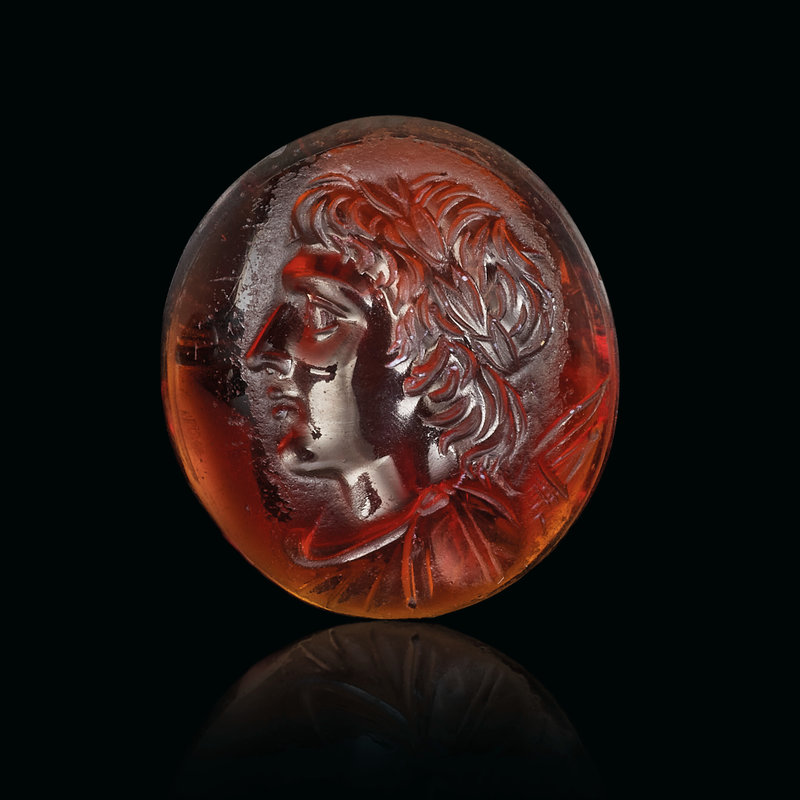
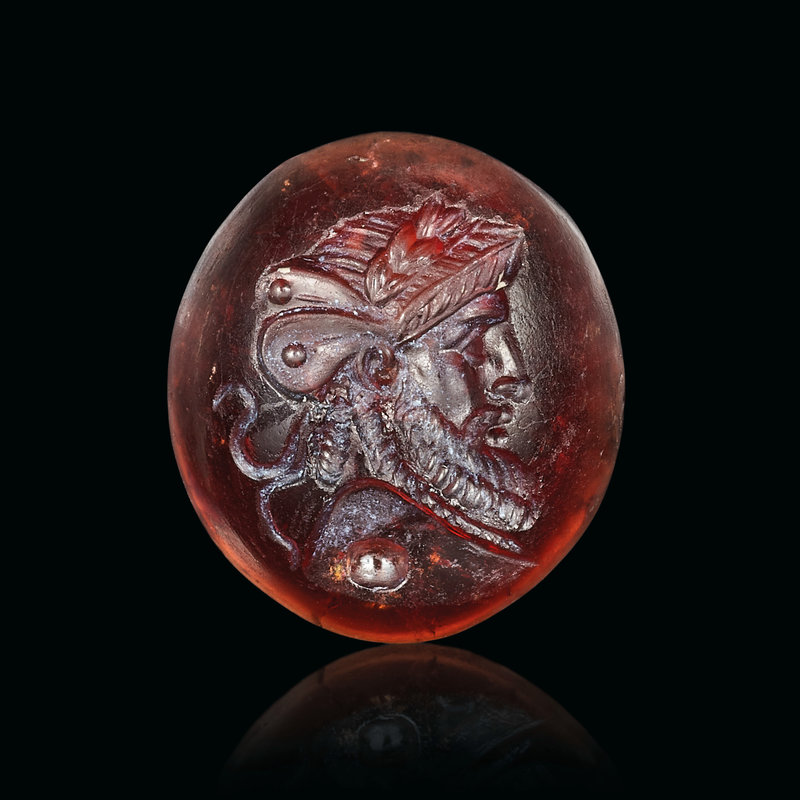




/http%3A%2F%2Fstorage.canalblog.com%2F40%2F48%2F119589%2F95722832_o.jpg)
/http%3A%2F%2Fstorage.canalblog.com%2F68%2F87%2F119589%2F95722761_o.jpg)
/http%3A%2F%2Fstorage.canalblog.com%2F91%2F36%2F119589%2F95722685_o.jpg)
/http%3A%2F%2Fstorage.canalblog.com%2F21%2F77%2F119589%2F95508568_o.jpg)